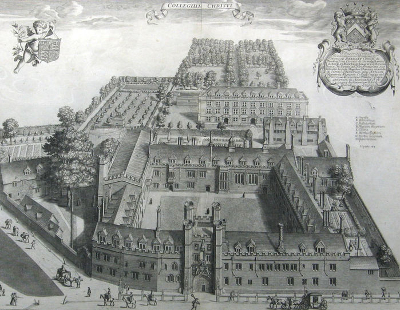
Christ’s College, Cambridge, from David Loggan, ‘Cantabrigia Illustrata’ (1690). (Source of image: Wikimedia Commons)
For weeks now I’ve been meaning to write to draw attention to the catalogue of the correspondence of Joseph Mede (or Mead, as he signs himself frequently in letters to his friend Sir Martin Stuteville) which has been increasing steadily in EMLO over recent months. What began as twenty-five letter records within the Samuel Hartlib catalogue published during the initial phase of the Cultures of Knowledge project (worked on sequentially by Leigh Penman and Robin Buning) has been augmented with the addition of metadata for Mede’s letters selected and published by John Worthington.[1. The works of the pious and profoundly-learned Joseph Mede, B.D. sometime fellow of Christ’s Colledge in Cambridge, ed. John Worthington (London, 1664; 1672, second edn; 1677, third edn), and The works of the reverend, iudicious and learned divine, Mr. Iospeh Mede (London, 1648).] With assistance from EMLO Digital Fellow Laura Lawrence, Mede’s catalogue has been extended still further to encompass the collection of letters contained in the British Library (MS Harleian 389 and MS Harleian 390) that were written on a weekly basis to Stuteville.[2. See David Cockburn, ‘A Critical Edition of the Letters of the Reverend Mead (1626–1627), contained in British Library Harleian MS 390’, DPhil. thesis, University of Cambridge, 1994, and Daphne Westbury, ‘An Edition of the Letters (1621–1625) of the Reverend Joseph Mead to Sir Martin Stuteville of Suffolk in BL MS Harleian 389’, PhD thesis, University of Leicester, 1991.] At present, the inventory in EMLO for Mede’s correspondence includes records for 436 letters.
Mede is a rare gem. A modest man, portrayed by his pupil (and ultimately his editor) Worthington as ‘studiously regardless of Academical Degrees, as being unwilling to make any great noise and report in the world’,[3. The works of the pious and profoundly-learned Joseph Mede, B.D. sometime fellow of Christ’s Colledge in Cambridge, ed. John Worthington (London, 1677, third edn), p. XV.] he described himself in a typically self-effacing manner as in possession of ‘brains … so narrow, that I can tend and mind but one thing at once’.[4. Ibid, Book V, Epistle XIV.] His letters are a revelation (I’m sorry, I couldn’t resist this pun) and not only on the prophetic and apocalyptic fronts: should you be interested in the political situation that makes up the backdrop to Mede’s life in the 1620s, you will enjoy his letters to Stuteville, packed as they are with news, gossip, and detailed reports of current local, national, and international events. Here at EMLO we’ve been transfixed and glued to our monitors as we’ve worked with this inventory.
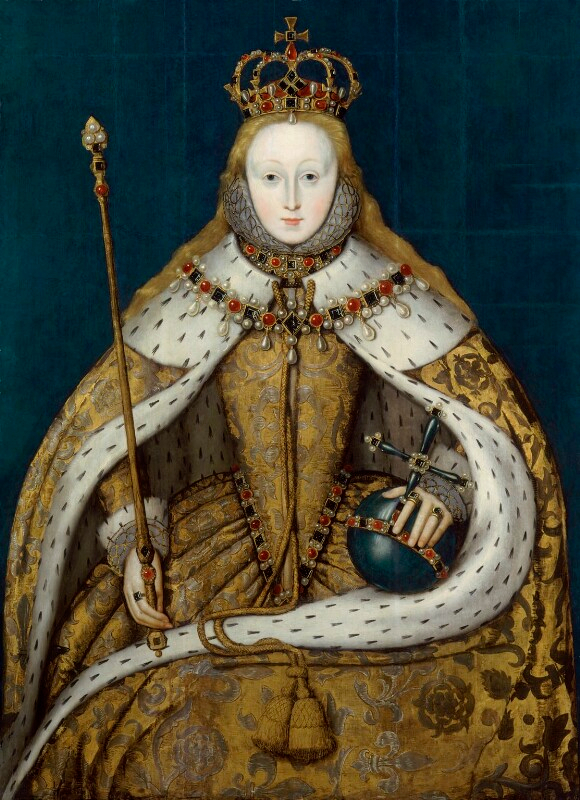
Portrait of Elizabeth I in her accession robes, by an unknown artist. Oil on panel, c. 1600. (Source of image: National Portrait Gallery, London, NPG 5175)
If proof were needed (which, of course, as you’re reading this blog you’ll know it is not) that it is worth poring over letters to tease out tiny and what might appear at first glance to be inconsequential details, it was a delight to note the comments that accompanied the dates Mede marked on his missives to Stuteville. What seems to be no more than an insignificant factoid often turns out to be a nugget that enables a small piece of a larger picture to be set in place. Whilst we knew Mede was born in October 1586, thanks to his letter of 13 October 1627, we have been able to squirrel away one minor but important fact about him, for he marked this letter ‘Christs Colledg. October 13. My birth day’.[5. Letter of 13 October 1627, British Library, MS Harleian 390, fols 303r–303v, with transcription in David Cockburn, op. cit., above, pp. 892–5.] Of course this small scrap has gone straight into Mede’s person record in EMLO. It turns out that the precise day of his birth is not recorded in the ODNB,[6. Bryan W. Ball, ‘Mede (Mead), Joseph (1586–1638)‘, in Oxford Dictionary of National Biography (Oxford: OUP, 2004; online: 23 September 2004, rev. 28 May 2015).] nor is it in Venn,[7. J. Venn and J. A. Venn, Alumni Cantabrigienses, 2 pts in 10 vols (1922–54); repr. in 2 vols. (1974–8), vol. 1, pt 3, p. 170.] but now — to the delight of those who make up the fan club of Mr Mede — it exists in our union catalogue. And there are further tidbits to be uncovered in these letters to Stuteville. By way of example, we find another letter dated ’17 November. When our belles in every Church are ringing here in memory of happie Queene Elizabeth.'[8. Letter 17 November 1627, British Library, MS Harleian 390, fols 319r–320r, with transcription in David Cockburn, op cit., above, pp. 919–27.] This is 1627, and the man born two years before the Armada is noting how bells peal in Cambridge to mark Elizabeth’s accession nearly a quarter of a century after her death.
Mede wrote each week to Stuteville, who lived in Dalham, Suffolk (Stuteville’s memorial, which sees him flanked by his first and his second wives, together with their kneeling children, is still in place at St Mary’s, Dalham).[9. I wish I could post an image here, but, copyright being what is it, this is not possible; if you’re interested in Stuteville’s appearance, a quick search online will throw up a couple of photographs.] Mede, the modest man for whom we have no surviving likeness, was writing from Christ’s College, Cambridge (when he was not in college, the weekly letters cease temporarily and often it transpires he has made the journey of approximately twenty miles to visit his friend). Alongside his own brief commentary on news ‘of the day’, Mede transcribed passages from news pamphlets and gazettes sent to him in Cambridge from London, including those from John Pory and Dr James Meddus. Meddus is an interesting individual. He turns out to be James Meddowes, and it is not a surprise to learn he was Mede’s most reliable source of foreign news for, although he was born in Cheshire, he studied at Heidelberg and received his doctorate from Basel University. On 6 July 1610, Meddowes/Meddus was incorporated at Oxford University.[10. Joseph Foster, Alumni Oxonienses 1500–1714 (Oxford, 1891) on British History Online, accessed 30 April 2018.] From 1612 he was member of Gray’s Inn. He served as chaplain to James I, and was rector of St George, Eastcheap, from 1597; of St Gabriel, Fenchurch Street, from 1603, and from 1614 of Snodland in Kent. (And here’s a random fact for the day: two other figures residing at the heart of the EMLO union catalogue were later incumbents at St Gabriel, Fenchurch Street: mathematician and cryptographer John Wallis, who was granted the sequestrated living in 1643,[11. With thanks to Dr Philip Beeley for this contribution.] and — a full century later — the compiler of the works of Robert Boyle, Thomas Birch.) Goodness, what we will be able to do with people and buildings in the new people and place databases in development at present. But that’s a treat to look forward to; for the present, we are fortunate with these letters to be able to spend time in the company of Joseph Mede. As you read and observe further nuggets, please email us or tweet to alert Mede’s burgeoning fan-club …
And as a final note, for the many who are interested in the connections between Isaac Newton and Joseph Mede[12. See Rob Iliffe, Priest of Nature: The Religious Worlds of Isaac Newton (Oxford: Oxford University Press, 2017), in particular pp. 235–6, and Rob Iliffe, ‘Newton, God, and the mathematics of the Two Books’, in Lawrence Snezana and Mark McCartney, eds, Mathematicians and their Gods (Oxford: Oxford University Press, 2015), pp. 121–44.] (and who possess the patience to have arrived at the end of this post), the recent exciting discovery in the Huntington Library by Stephen D. Snobelen of Newton’s own dog-eared copy of Worthington’s 1672 edition of Mede makes fascinating reading.[13. Stephen D. Snobelen, ‘Newton’s Lost Copy of Mede, Revealed‘, on VERSO, The Blog of the Huntington Library, accessed 30 April 2018.] I’ll leave you to click through to the Huntington, while I go back to work.

 When EMLO launched its
When EMLO launched its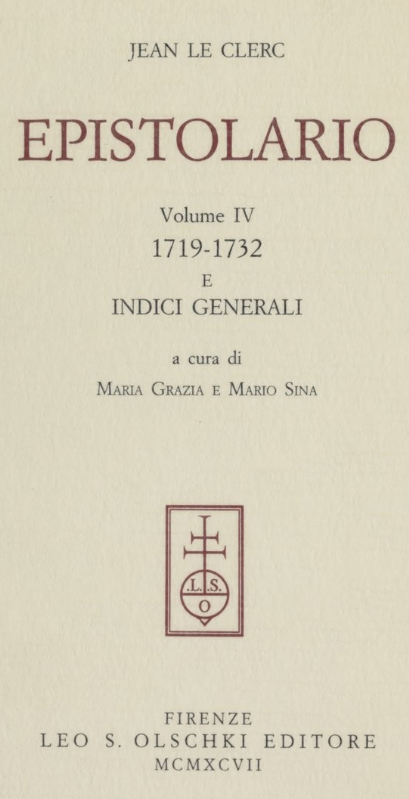 Le Clerc (1657–1736) stands today a towering figure at the heart of the golden age of the république des lettres. As a scholar, he published widely, in particular a number of key critical works, yet perhaps of more significance still he was renowned far and wide during his lifetime for his rigorous and insightful activity as a journalist. Le Clerc’s correspondence has been collected, studied, edited, and published by the scholars Mario Sina and Maria Grazia Zaccone-Sina, and their
Le Clerc (1657–1736) stands today a towering figure at the heart of the golden age of the république des lettres. As a scholar, he published widely, in particular a number of key critical works, yet perhaps of more significance still he was renowned far and wide during his lifetime for his rigorous and insightful activity as a journalist. Le Clerc’s correspondence has been collected, studied, edited, and published by the scholars Mario Sina and Maria Grazia Zaccone-Sina, and their 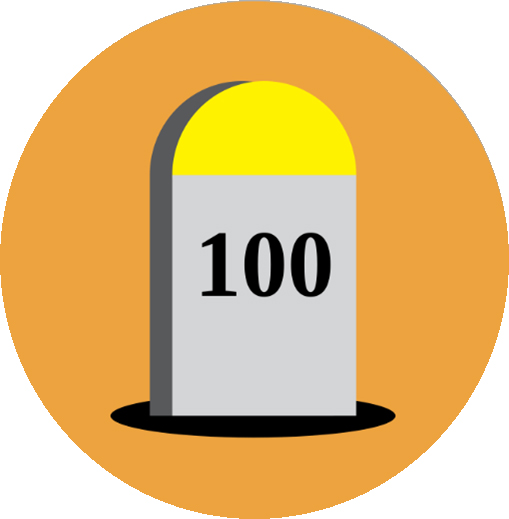 Over the course of this year, Le Clerc will be joined by many more Huguenots, by many more philosophers, and by many more theologians, and the groupings of corresponding individuals, including astronomers, cartographers, collectors, diplomats, intelligencers, mathematicians, natural philosophers, physicians, and scholars — men and
Over the course of this year, Le Clerc will be joined by many more Huguenots, by many more philosophers, and by many more theologians, and the groupings of corresponding individuals, including astronomers, cartographers, collectors, diplomats, intelligencers, mathematicians, natural philosophers, physicians, and scholars — men and 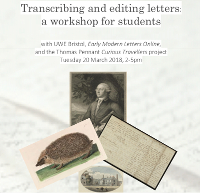
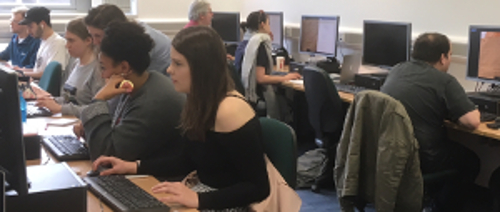
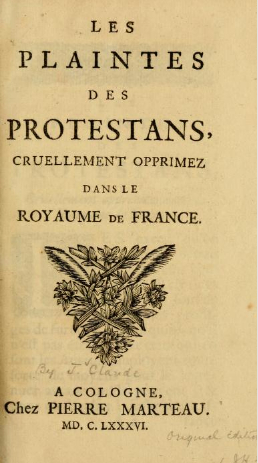
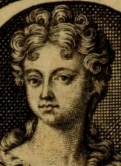
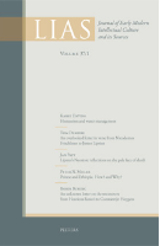 Lias: the Journal of Early Modern Intellectual Culture and its Sources is a peer-reviewed publication which takes its name from the Dutch work for ‘file’; it is committed to publishing primary sources that relate to the intellectual and cultural history of early modern Europe. The journal was established to provide a platform for sources that are relatively short in length. And it is in the pages of this journal that Hollis’s edition of the Elstob-Ballard correspondence may be consulted, either by subscription or through the purchase of a single hard-copy issue; and should users be within a subscribing institution, links to the downloadable text are provided from each relevant letter record in EMLO. The journal’s editor-in-chief,
Lias: the Journal of Early Modern Intellectual Culture and its Sources is a peer-reviewed publication which takes its name from the Dutch work for ‘file’; it is committed to publishing primary sources that relate to the intellectual and cultural history of early modern Europe. The journal was established to provide a platform for sources that are relatively short in length. And it is in the pages of this journal that Hollis’s edition of the Elstob-Ballard correspondence may be consulted, either by subscription or through the purchase of a single hard-copy issue; and should users be within a subscribing institution, links to the downloadable text are provided from each relevant letter record in EMLO. The journal’s editor-in-chief, 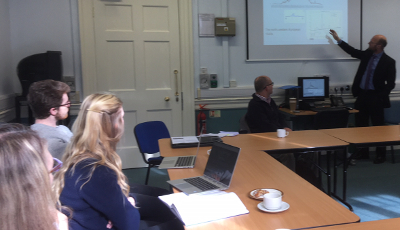

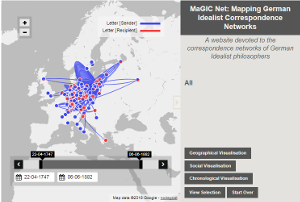
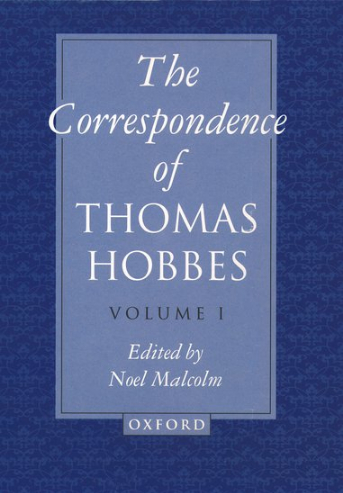 Yet gems aplenty are to be found within the correspondence, and users are encouraged either to take advantage of the subscriptions held by their institutional libraries to follow the links from each record in EMLO to the texts that are mounted in OSEO, or to locate the hard-copy volumes. The metadata for this correspondence were supplied to EMLO by
Yet gems aplenty are to be found within the correspondence, and users are encouraged either to take advantage of the subscriptions held by their institutional libraries to follow the links from each record in EMLO to the texts that are mounted in OSEO, or to locate the hard-copy volumes. The metadata for this correspondence were supplied to EMLO by 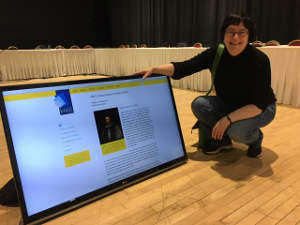
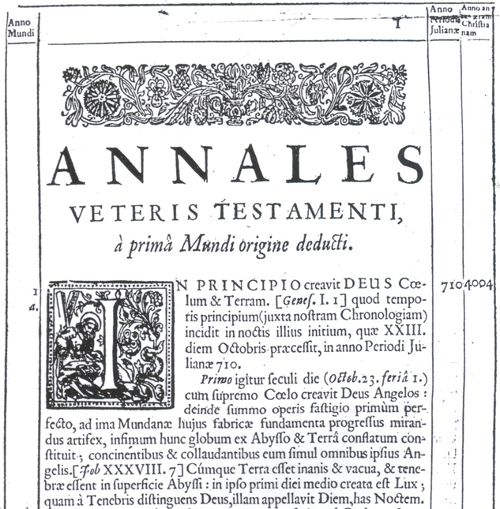
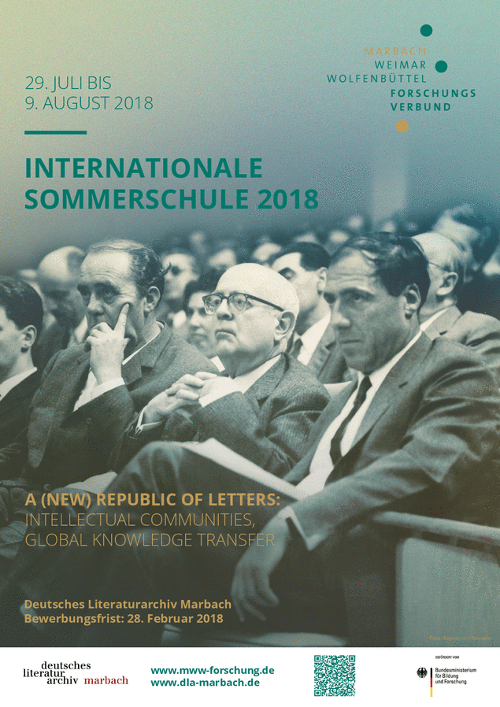 Twenty international scholarships are available and doctoral students will be invited to explore and discuss the ‘phenomenon of the Republic of Letters, its historical and theoretical manifestations, and the terminological challenges it poses’. They will be encouraged to consider such questions as the aesthetic, political, and social conditions upon which networks for knowledge exchange are built; to ask what rules and customs those communicating with each other observe; as well as to explore the transformations these communities undergo, and determine terminology and methods that might be employed to describe today’s ‘literary and intellectual landscape on a transnational scale’ ― a landscape itself now termed a ‘New Republic of Letters’ .[2.
Twenty international scholarships are available and doctoral students will be invited to explore and discuss the ‘phenomenon of the Republic of Letters, its historical and theoretical manifestations, and the terminological challenges it poses’. They will be encouraged to consider such questions as the aesthetic, political, and social conditions upon which networks for knowledge exchange are built; to ask what rules and customs those communicating with each other observe; as well as to explore the transformations these communities undergo, and determine terminology and methods that might be employed to describe today’s ‘literary and intellectual landscape on a transnational scale’ ― a landscape itself now termed a ‘New Republic of Letters’ .[2. 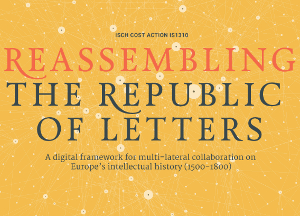 in Tallinn, this four-day workshop offers those who focus on early modern correspondence the opportunity to prepare epistolary metadata using tools that will both assist their own research and facilitate publication in a union catalogue. Early career scholars, representatives from institutions with large holdings of early modern correspondence, and individuals interested in disseminating further the taught epistolary standards, techniques, and tools within their scholarly communities are encouraged to apply. Whilst applications are welcomed from scholars in all countries participating in the COST Action, the Training School is funded by an ‘Inclusiveness and Target Countries’ grant, so scholars from these countries are encouraged in particular to apply (further details regarding this may be found in the original call).
in Tallinn, this four-day workshop offers those who focus on early modern correspondence the opportunity to prepare epistolary metadata using tools that will both assist their own research and facilitate publication in a union catalogue. Early career scholars, representatives from institutions with large holdings of early modern correspondence, and individuals interested in disseminating further the taught epistolary standards, techniques, and tools within their scholarly communities are encouraged to apply. Whilst applications are welcomed from scholars in all countries participating in the COST Action, the Training School is funded by an ‘Inclusiveness and Target Countries’ grant, so scholars from these countries are encouraged in particular to apply (further details regarding this may be found in the original call).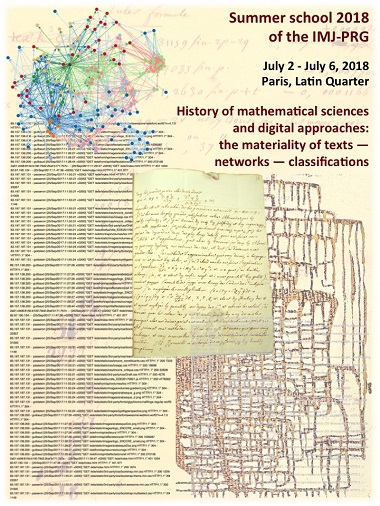 Thereafter, mathematical historians, historians of science, and digital humanists may be interested in the International Summer School being organized by the
Thereafter, mathematical historians, historians of science, and digital humanists may be interested in the International Summer School being organized by the